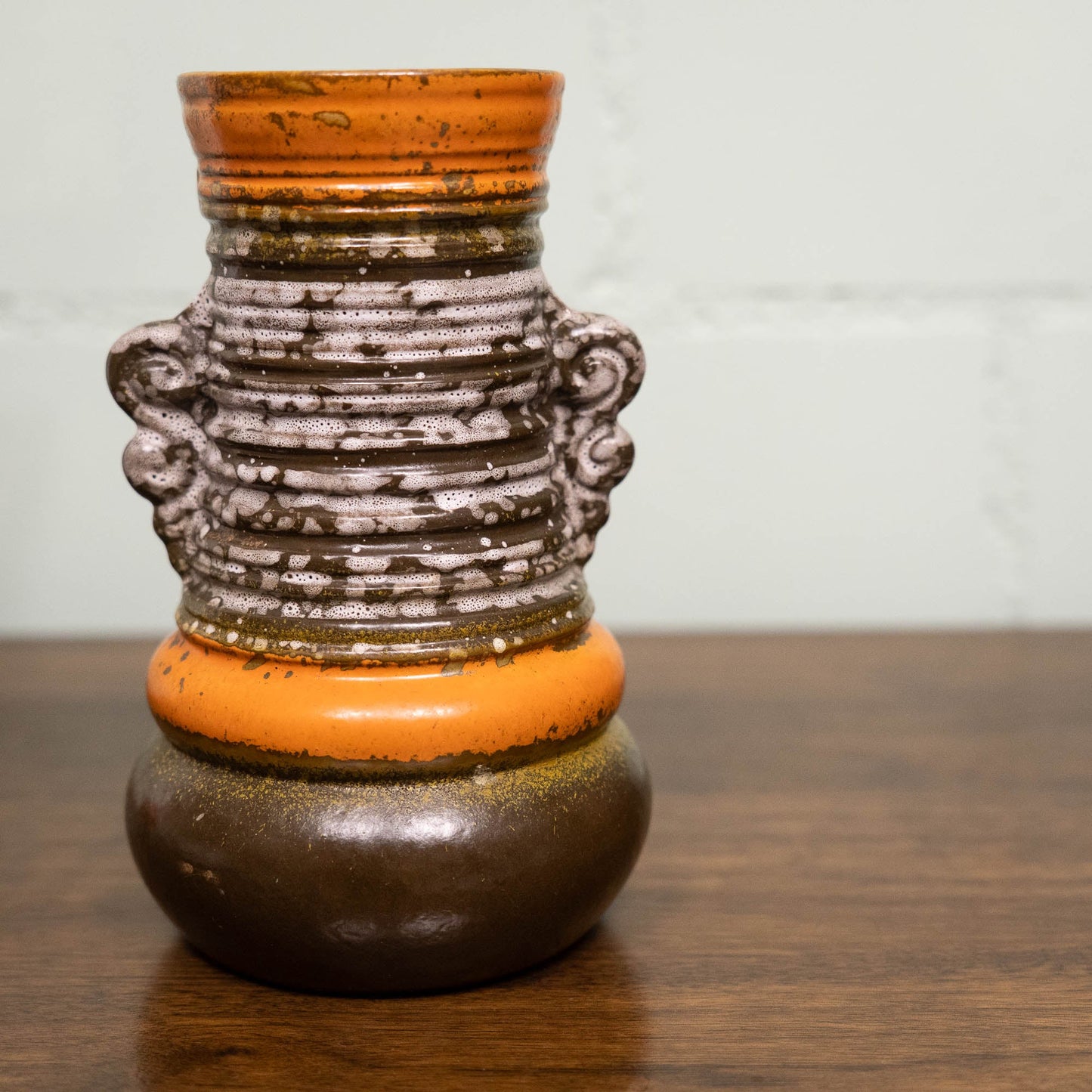This rare Strehla Form 1293 Fat Lava vase is a striking example of mid-century East German craftsmanship. With its unique design, it features bold, iconic wing handles that evoke a Brutalist aesthetic, complemented by the deep dark brown glaze and a vibrant shiny orange contrast. This colour combination gives the vase a dramatic, retro flair that will stand out in any collection.
Strehla, renowned for its mid-century Fat Lava objects, played a significant role in the ceramic art scene of the era. Known for their innovative and experimental glazes, Strehla pieces like this one highlight the bold and tactile designs characteristic of the movement.
Though lesser-known compared to Western manufacturers, Strehla’s work remains highly collectible due to its rarity, historical significance, and artistic innovation. A perfect fusion of form and texture, this vase stands as an iconic piece of mid-century East German design, both functional and visually captivating.























